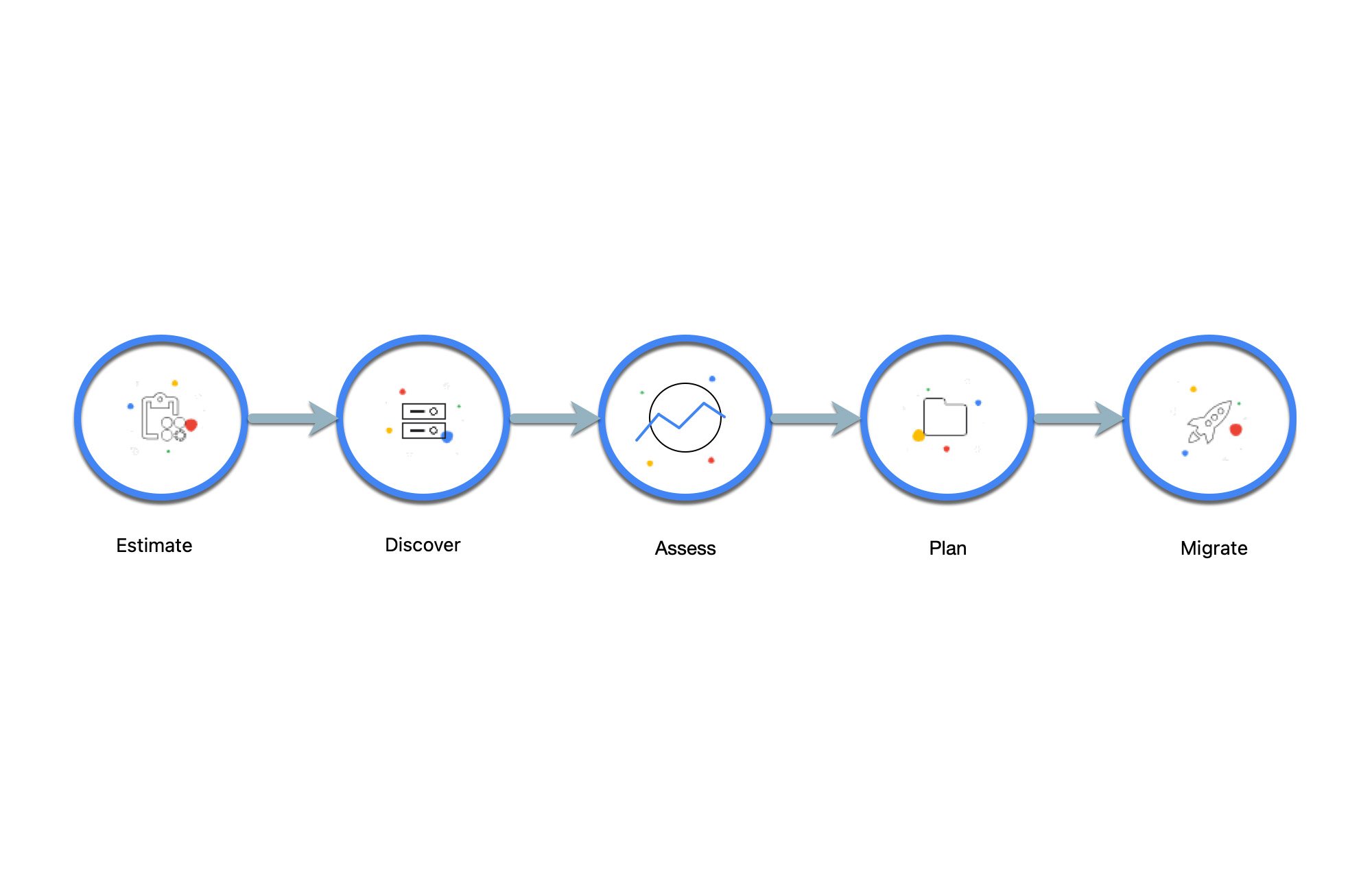Migration on your mind? Here’s the biggest migration news from Next ‘23

Stephen Orban
VP, Migrations, ISVs, and Marketplace
Nirav Mehta
VP, Google Cloud Compute Platform
It’s probably stating the obvious at this point, but businesses are increasingly migrating to the cloud. Whether it’s a few applications or entire data centers, it’s happening. Slightly less obvious are why businesses are migrating, but similar themes weave across each story. These reasons are often combinations of cost savings, increasing agility, improving security, enhancing compliance, accelerating innovation, and adopting new AI technologies – often a mix and match based on any given business’ goals and constraints. Our goal at Google Cloud is to help you solve that puzzle, no matter how challenging.
Our customer, John Gigerich, SVP and CIO for Keurig Dr Pepper, explains our joint approach perfectly: “Google Cloud is a true partner that gives us the stability and flexibility to support critical business applications needed to drive innovation and ensure business continuity. The migration to Google Cloud has been seamless and was a key project in our merger integration and modernization efforts as Keurig Dr Pepper.”
To continue helping you on your migration journey, let's recap some of the exciting announcements we made this week at Google Cloud Next ‘23 that will help you migrate faster, easier, and more seamlessly than ever before.
Our optimized Rapid Migration Program (RaMP)
Though Google Cloud has offered Rapid Migration Program (RaMP) for many years, we spent the last twelve months revamping (or, re-RaMPing, if you will…) it to make it even more comprehensive and seamless than before. To start, we anchored the updated program in five key best practices, which we’ll paraphrase here:
Define a strong business case
Craft a learning plan
Build a “Cloud Center of Excellence” (CCoE) team
Practice good program governance
Track a well-defined set of goals
Anchoring on these five best practices gives businesses the greatest chance of success. And we know from experience how challenging the initial phases can be, so we’re adding lots of functionality to make your upfront planning faster, smarter, and easier. We are pleased to announce the Cloud Capability Assessment (CCA) for RaMP as the first step to building an outcome-driven migration strategy. The short online assessment determines where you are in your migration journey and identifies tangible actions across business, operational and technology areas that drive successful migrations to Google Cloud. It’s a quick way to get early traction on your migration planning.
Next, we built a detailed migration-planning dashboard that every Google Cloud migration customer can leverage, in coordination with their field, professional services, and partner teams. This dashboard helps customers build a business case and drive stakeholder alignment, assess and close skill gaps, while streamlining processes, and ensuring technology readiness.
After prioritizing workloads into “migration waves” segmented by migration strategy, create a landing zone with adequate financial, security, and compliance controls. Once you evaluate what tools to use, execute a training and enablement plan, establish a CCoE, set an OKR, pick the right partner(s), and relentlessly manage the migration.
Bringing all the tools you need together with Migration Center
Good processes are the lifeblood of a successful migration, but the tools you’ll use to plan and migrate are also critical to success — and having them in one unified location helps drive that success.
Within the tooling arm of RaMP, we also announced the general availability of Migration Center, a unified service within your Cloud Console that helps you accelerate your end-to-end cloud journey from your current on-premises or cloud environments to Google Cloud. Migration Center provides one place for you to access tools, best practices and data-driven prescriptive guidance to guide you through business case development, environment discovery, workload mapping, migration planning, financial analysis, foundation setup and migration execution.


Migration Center runs and stores any inventory data within your own Google Cloud project, which means you have full control of your data and who can access it. Migration Center also complies with Google’s security and privacy policies, and best of all, it is free to use.
New to Migration Center is the integration of our discovery and assessment tooling, making it fast and easy to precisely understand your existing IT landscapes. You can create a precise migration plan and budget estimate based on detailed information from each system in your IT landscape (vCPU, Memory, Storage, etc.). Migration Center gives you data-driven migration and modernization options and then, based on what you select, it generates a thorough total cost of ownership (TCO) report for you.
A quick but thorough discovery and assessment is another key to a successful migration, as our customer, Linh Chung, CIO of Viant Technology, can attest: “We had 6 months to migrate a complex environment comprising 600 virtual machines (VMs), 200+TB of data, 80+ MSSQL databases, and 100 physical servers from on-premises to the cloud. Google Cloud provided discovery and assessment through the Rapid Migration Program (RaMP), giving us a complete inventory to migration plan within 24 hours. We even identified places where cost and redundancy could be cut by determining which VMs were necessary to migrate and which could be turned off.”
Enabling VMware workloads with Google Cloud VMware Engine
For those utilizing vSphere workloads, Google Cloud VMware Engine (GCVE) offers seamless integration with the Google Cloud network, console, and identity management. This allows for the fast, seamless translation of intricate enterprise topologies to Google Cloud. As Alex Bingham, IT Director, Cloud Services, ADT puts it: "We're migrating data centers from on-premises to Google Cloud in under 90 days, achieving greater agility in our application development and management, reducing spend, and continuing to innovate."
To that end, we’ve continued expanding our global presence for GCVE, increasing it to 18 regions, and in the past year we’ve begun offering locations including Turin, Italy (europe-wst12), Santiago (southamerica-west1), and Delhi (asia-south2).
We also just announced a preview of our new flexible ve2 node platform, powered by 3rd Generation Intel® Xeon® Scalable Processors (formerly named Ice Lake) in addition to our next-generation VMware Engine networking, which will make it simpler for enterprises to translate their complex networking architectures to the cloud by shifting to native VPC peering, allowing multiple peering types with increased limits and bi-directional Cloud DNS integration.
Modernizing Oracle workloads with DMS Conversion Workspace
Databases are a core part of the application stack, and many legacy environments are based on Oracle databases. We know that many of your modernization projects include migrations from expensive, legacy databases to open source-based alternatives, and we’ve been investing in our toolset for simplifying and automating these migrations.
At Next ‘23, we announced the preview of a major new version of Database Migration Service with an integrated Conversion Workspace that simplifies Oracle-to-PostgreSQL migrations. It guides you through every step of the process including schema and code conversion and data movement, and can convert many Oracle objects automatically. At the end of the process, you have a PostgreSQL-based cloud database with a full copy of your data.
We also demonstrated how Duet AI in Database Migration Service will solve the most difficult schema and code conversion issues — what we call the “last mile.” Make sure to view our Databases Spotlight session for a peek into the future of AI-based, automatic database migration, which may help you break free from legacy databases you haven’t been able to move to the cloud before.
Event-driven transfer capabilities for Storage Transfer Service
Storage Transfer Service (STS) offers a managed way for you to quickly and securely transfer data between object and file storage across Google Cloud, Amazon, Azure, on-premises, and more. We are thrilled to announce two exciting launches for STS at Google Cloud Next ‘23.
First, STS now offers GA support for event-driven transfer — a serverless, real-time replication capability to copy data from AWS S3 to Google’s Cloud Storage and between multiple Cloud Storage buckets. With this new support, event-driven transfers can deliver data from AWS S3 to Cloud Storage within a matter of minutes. This accelerates and simplifies building multi-cloud analytics pipelines.
Additionally, STS now offers support for effortlessly transferring data – in the order of petabytes – from on-premises Hadoop Distributed File Systems (HDFS) sources to Cloud Storage. This is currently available for trusted testers and will be publicly accessible in coming months.
Bringing your SAP workloads to Google Cloud reliably
Customers often tell us they choose Google Cloud to migrate their SAP workloads because of the powerful and reliable infrastructure we offer, coupled with the ability to securely manage those applications. In keeping with those efforts, this week at Next ‘23, we announced industry leading single-instance SLA of 99.95% for memory-optimized VMs that power SAP HANA.
One of our newest announcements, SAP Cost Estimator, which is integrated directly into Migration Center. This helps determine costs for SAP deployments in predefined sizes (X-small, Small, Medium, Large, X-Large), based on a typical Infrastructure as a Service (IaaS) Bill of Materials for SAP applications. The SAP Cost Estimator provides an initial cost estimate, giving valuable insights into the cost of running SAP infrastructure on Google Cloud.
We also announced new capabilities for Google Cloud Workload Manager to better secure and modernize your SAP workloads. SAP Security Validation, now available in Public Preview for Workload Manager, provides SAP-specific infrastructure and application-level security checks. Additionally, the Guided Deployment Automation service, now available in Public Preview, generates custom automation code to simplify your modernization journey to S/4HANA.
We’ve also made it easier for SAP developers to migrate to and run on Google Cloud with our ABAP SDK for Google Cloud. This provides bi-directional, real-time extensions between SAP and Google Cloud services. Developers can easily leverage this SDK to integrate their SAP applications with Google Cloud services such as Vertex AI, Document AI, Translation AI, Pub/Sub, and others.
Making migration happen with our partners
No matter how large your organization, no one wants to go through a modernization alone, and a successful cloud migration is a group effort leveraging experts across disciplines. As part of RaMP, we’ll rely solely on partners who have achieved one (or both) of the following Google Cloud certifications: Data Center Modernization Specialists and Cloud Migration Specialists. We’re thrilled that feedback on RaMP has been thoroughly positive across the board:
We were pleased to recently announce our first partner selected for RaMP, Wipro FullStride Cloud Studio. Jo Debecker, Global Head of Wipro FullStride Cloud, expressed: “This new partnership is a testament to our strong and valued collaboration with Google Cloud, where both organizations enable fast, cost-effective cloud migration, as well as modernization and transformation services.”
Miles Ward, Chief Technology Officer of SADA, shares that “Migrations are incredibly complex, certainly technically, but also in terms of relationships, expectations, and business dependencies. This is hard enough to sort out with a two-party relationship; we deal with 3+ all the time. Having the consistent structure of RaMP to anticipate, to unify preparations and align across all teams creates real efficiency and lowers the cost of rigor.”
And Christophe DeMoss, Managing Director of the Google Cloud Practice for our partner Slalom, shares “It is remarkable how fast RaMP has allowed us to standardize on a common language and a common set of practices. Even though we at Slalom had our own tried-and-true methodology (BTEG - Business Transformation Enabled by Google Cloud), RaMP contained the same elements of success for migrations. Now we are talking the same language with Google account teams, and teaming up as one to optimize speed and quality of customer migrations. We are now deploying RaMP for all our migration projects via our ‘Amped on RaMP’ program."
By leveraging these trained and certified partners you won’t have any questions or doubts about their ability to guide you through your migrations using the RaMP program. This includes helping you with planning, cost estimation, assessments, building foundations, setting and tracking goals, and more. With these trusted partners, you’ll be in great hands, and with RaMP, you’ll be able to easily find the partner that is right for you. For any partners out there reading this and you’re interested in joining our RaMP program, reach out to your partner manager or partner advisor so we can get you started.
Wrapping up
This is just a taste of all the great announcements we made at Google Cloud Next ‘23. If you are considering migrating your workloads to the cloud, our Rapid Migration Program is the formula you’ve been looking for. And Google Cloud offers a wide range of services and features that can help you improve the performance, reliability, security, and cost-effectiveness of your applications and workloads. If you’d like to learn more, you can read up on RaMP or Migration Center, or if you’re ready to rock n’ roll, click here to get started with a free discovery and assessment of your current IT landscape.



